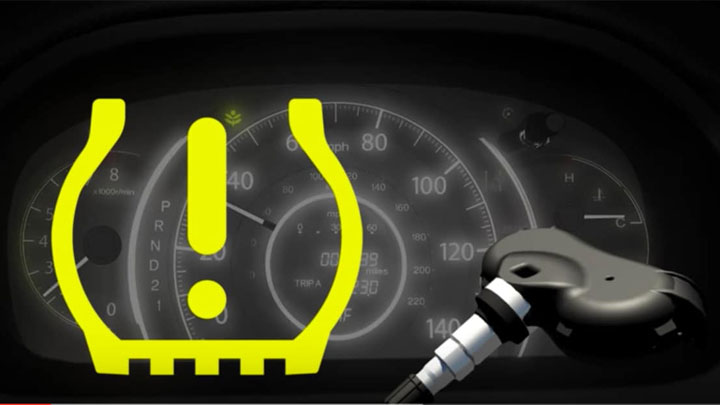The Tire Pressure Monitoring System (TPMS) is an essential feature in modern vehicles, designed to keep drivers informed about their tire health. When the TPMS light flickers on the dashboard, it can indicate various issues, but one alarming signal is the “Tire Pressure Sensor Fault.” Understanding the implications of this warning light is crucial for ensuring your safety on the road. In this article, we will explore what a TPMS warning signals, the potential causes behind a tire pressure sensor fault, and the steps you can take to rectify the issue.
Firstly, let’s delve into the fundamental role of the TPMS. This system utilizes sensors within each tire to continually monitor pressure levels and relay this information to the vehicle’s onboard computer. When for any reason, the pressure falls below or rises above the manufacturer’s recommended levels, the TPMS illuminates, urging the driver to investigate further. However, what happens when you see the TPMS light accompanied by a message stating “Tire Pressure Sensor Fault?”
Generally, a Tire Pressure Sensor Fault doesn’t necessarily indicate that your tires are not at the correct pressure. Instead, it signifies a malfunction within the TPMS itself. This could encompass a variety of technical issues, including a faulty sensor, an electrical problem, or a communication error between the sensors and the vehicle’s computer. Recognizing these specific faults is essential, as they may affect performance and safety.
Several common reasons can lead to a Tire Pressure Sensor Fault. One of the primary culprits is a dead battery within the tire pressure sensor. These sensors are typically powered by small batteries that have a limited lifespan, usually around several years. When these batteries expire, the sensor cannot function properly, resulting in an error message about tire pressure. It’s often surprising for drivers to realize that these batteries are not replaceable, and the entire sensor must be replaced instead.
Another frequent cause of this warning is physical damage to the sensor. Road hazards, such as potholes or debris, can adversely affect sensor integrity. Similarly, improper installation during tire service or rotation can inadvertently damage the sensors. It is critically important to ensure that technicians are knowledgeable about the TPMS to avoid such pitfalls.
Additionally, programming issues may arise, particularly if the vehicle has undergone recent maintenance, such as sensor replacements. If the replacement sensors are not correctly programmed into the vehicle’s onboard computer, it can trigger the sensor fault warning. This discrepancy signifies a miscommunication between the sensors and the vehicle’s TPMS, which must be rectified to restore functionality.
Moreover, environmental factors can sometimes contribute to these sensor errors. Changes in temperature can lead to fluctuations in tire pressure, which the TPMS is equipped to manage. However, if the temperature variation is extreme, it could unearth issues with the sensors that were previously dormant. Seasonal transitions often expose these vulnerabilities, necessitating frequent checks during these periods.
When confronted with a Tire Pressure Sensor Fault, taking heed of the warning and not disregarding it is paramount. Driving with compromised tire health can lead to dangerous to catastrophic outcomes, including blowouts. The first step should always involve checking the tire pressure using a reliable gauge. Ensure that all tires, including the spare, are inflated to the recommended PSI levels as indicated in the owner’s manual or on the sticker located on the driver’s door jamb.
Following this check, if the tire pressures are satisfactory yet the TPMS light remains illuminated, it’s advisable to have the system diagnosed by a professional mechanic. Mechanics possess specialized tools to read the vehicle’s diagnostic codes, which can reveal specific error messages related to the sensor. Armed with this information, they can pinpoint the exact nature of the fault.
In the event of a sensor battery failure, removal and replacement of the sensor are necessary. This process typically involves demounting the tire, allowing access to the sensor within the wheel. While some automotive enthusiasts may venture to replace the sensors themselves, it is generally wiser to leave this task to seasoned professionals to prevent potential mishaps.
Regular maintenance of the TPMS and associated components is also recommended to mitigate the chances of encountering a sensor fault. Tire rotation, pressure checks, and periodic inspections of the entire tire assembly help ensure that the TPMS operates efficiently. Much like any other vehicle component, preventive care can go a long way in enhancing the lifespan and reliability of the TPMS.
In conclusion, understanding the implications of a Tire Pressure Sensor Fault is vital for maintaining the health and safety of your vehicle. Regular checks on tire pressure, timely diagnostic evaluations, and proactive maintenance can prevent this issue from escalating into a more significant safety concern. As you navigate the roads, remember that being informed is your best defense against potential problems. Keeping your TPMS functioning well not only shields you from unnecessary stress but also keeps you and your passengers safe on your journeys.
